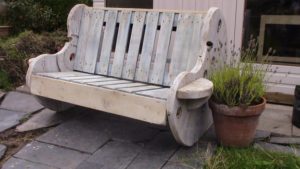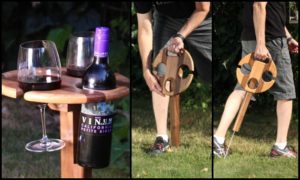Last Updated on November 14, 2024 by teamobn
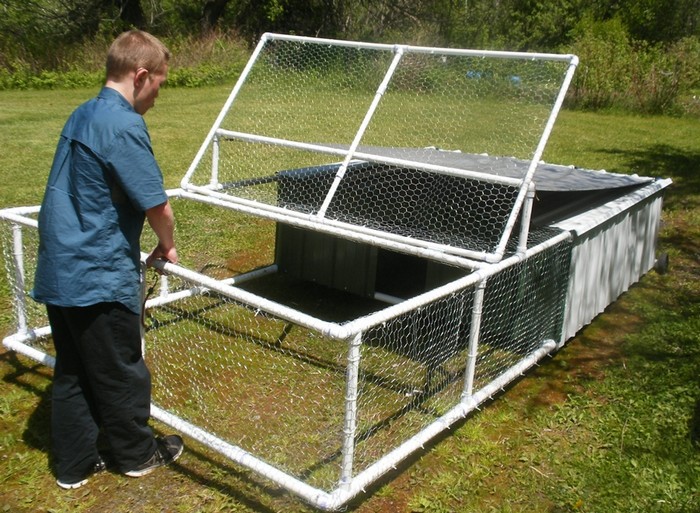
Seeking a cost-effective means to enhance your agricultural yields? Consider embracing the versatility of chicken tractors. These mobile chicken coops enable you to relocate your feathered flock across your land, granting them access to fresh grass and insects for nourishment. Simultaneously, they contribute to soil enrichment, all while helping you cut down on expenses typically linked to conventional farming approaches.
Plus, they provide your chickens with a natural diet that helps to improve their health and productivity. If you’re interested in trying out a chicken tractor, you can use PVC pipes to make one.
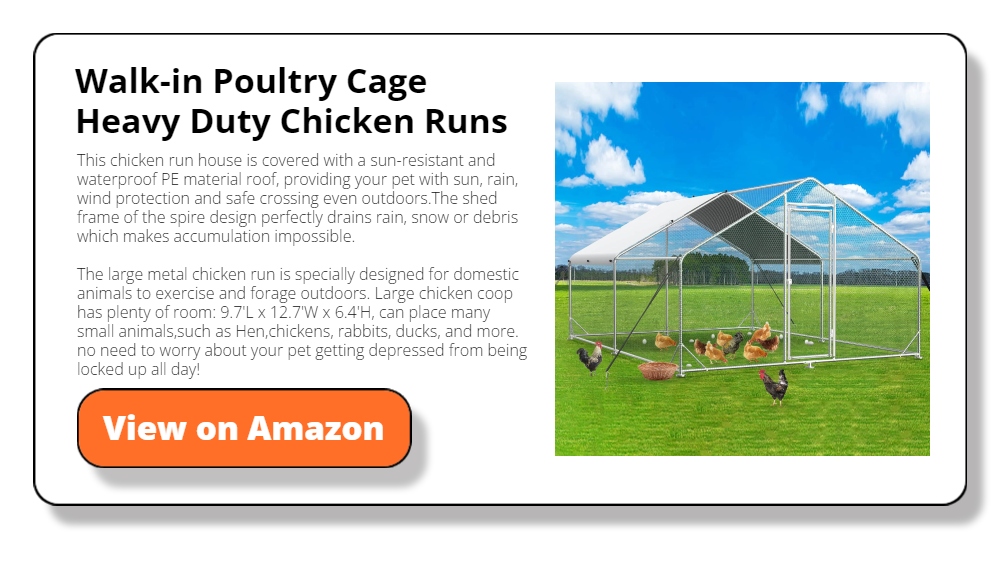
Unlike chicken tractors made of heavier materials like timber, a PVC chicken tractor is much lighter and more portable. You can build a larger PVC chicken tractor and still be able to relocate it without too much difficulty, making it a great option for those who want to move their chickens around frequently.
PVC chicken tractors have many benefits, one of which is rot-free. This makes them perfect for places where it rains frequently, as there is no need to repair or replace parts often. In addition, PVC chicken tractors are easy to repair should you need to do so. Consequently, they can be a great addition to any farm or homestead.
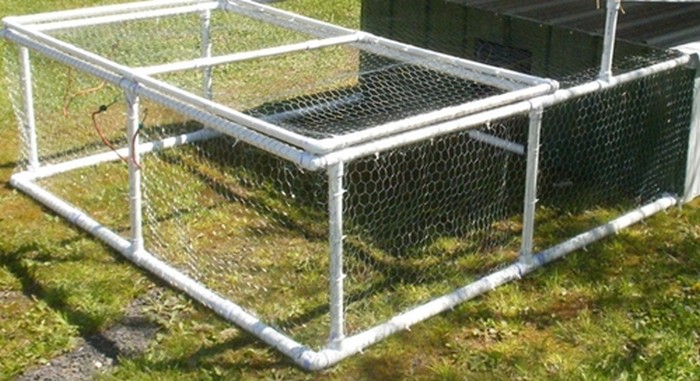
PVC chicken tractors can be tailored to suit various chicken quantities and can be equipped with functionalities that align with the unique requirements of farmers. For instance, a small-scale farmer might prefer a maneuverable, compact tractor, while a larger-scale farmer might seek a more expansive design capable of accommodating a greater chicken population.
Both types of farmers can find PVC chicken tractors that suit their needs, and these versatile structures can provide a safe and comfortable home for chickens while letting them roam and forage for food.

A chicken tractor is also less likely to damage your lawn or garden when you move it around. Best of all, it is much easier to build than a traditional coop, making it a great option for those who are just starting out to raise chickens.
What do you think? Is this the kind of chicken tractor you are looking for?
Contents
How to Make a PVC Chicken Tractor
Ready to give your feathered friends the ultimate coop upgrade? Now, how to craft a PVC chicken tractor, the innovative solution that lets your chickens roam freely while keeping them safe and sound.
In this part, discover the process of creating a feathered paradise that’s easy to move and a breeze to maintain. Gather the essential materials and tools to revolutionize your chicken-keeping experience and make your hens cluck with joy.
Materials
- 21 ft of 3/4″ PVC
- 4 – Elbows for 3/4″ PVC
- 2 – 3/4″x3/4″x3/4″ PVC Tees
- 6 – 3/4″ PVC Couplings
- 40 ft of 1.25″ PVC
- 4 – 1.25″ PVC Street Elbows (one insert end)
- 2 – 1.25″ x 1.25″ x 1.25″ PVC Tees
- 8 – 1.25″ x 1″ x 1.25″ PVC Tees (reduce to 1″ at top)
- 6 – 1.25″ PVC Couplings
- 75 ft of 1″ PVC
- 4 – 1″ x 1″ Street Elbows (one insert end)
- 17 – 1″ x 1″ x 1″ PVC Tees
- 2 – 1″ x 1″ PVC Elbows
- 6 – 1″ PVC Couplings
- 25 ft x 3ft Chicken Wire
- 4 – 3ft x 8 ft Metal Roofing
- 200 – 8″ Cable Ties
- 200 – Self-Threading Sheet Metal Screws
- 1 – 6ft x 8 ft Tarp
- 7 – Bungee Cords
- PVC Cement
- 3 – 2″ Hinges
- 2 – 8 ft 2×2 Treated Wood
- 1 – 3 ft 2×4 Wood
- 4 – 1.75″ Wood or Drywall Screws
- 10 – 2″ long, quarter-inch diameter Machined Screws with Matching Wingnuts
- 2 – 8″ Utility Wheels
- 2 – 8″ long 3/8″ Carriage Bolts
- 6 – Washers for the 3/8″ Carriage Bolts
Tools
- PVC Cutter
- 2 Cordless Drills
- Carpenter’s Square
- Hand Saw
- Tin Snips
Click on any image to start the lightbox display. Use your Esc key to close the lightbox.![]()


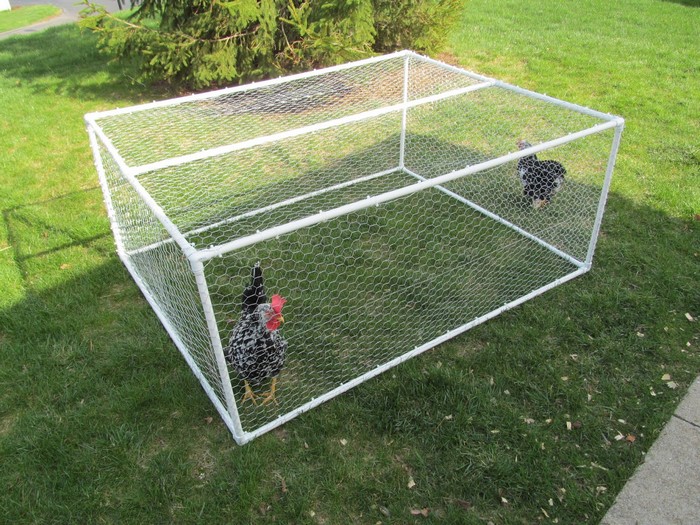
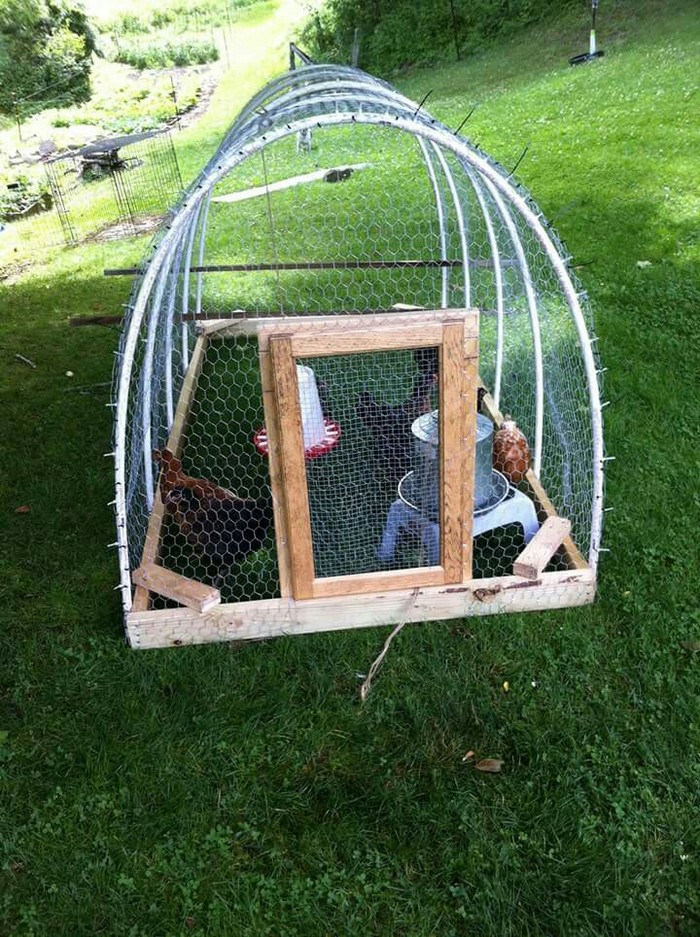
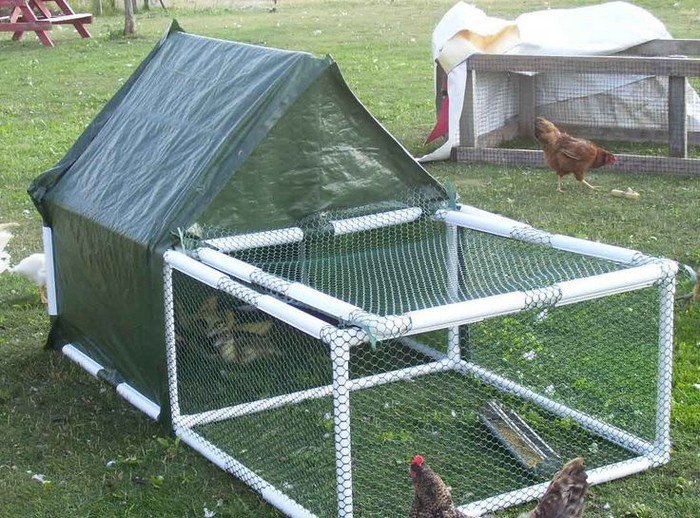
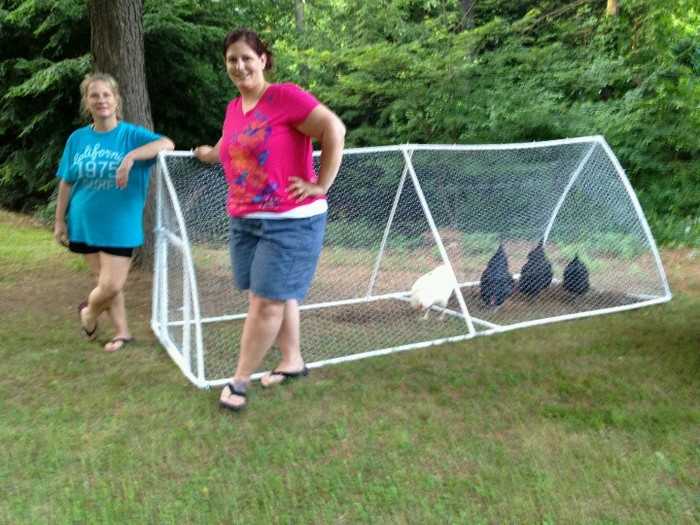
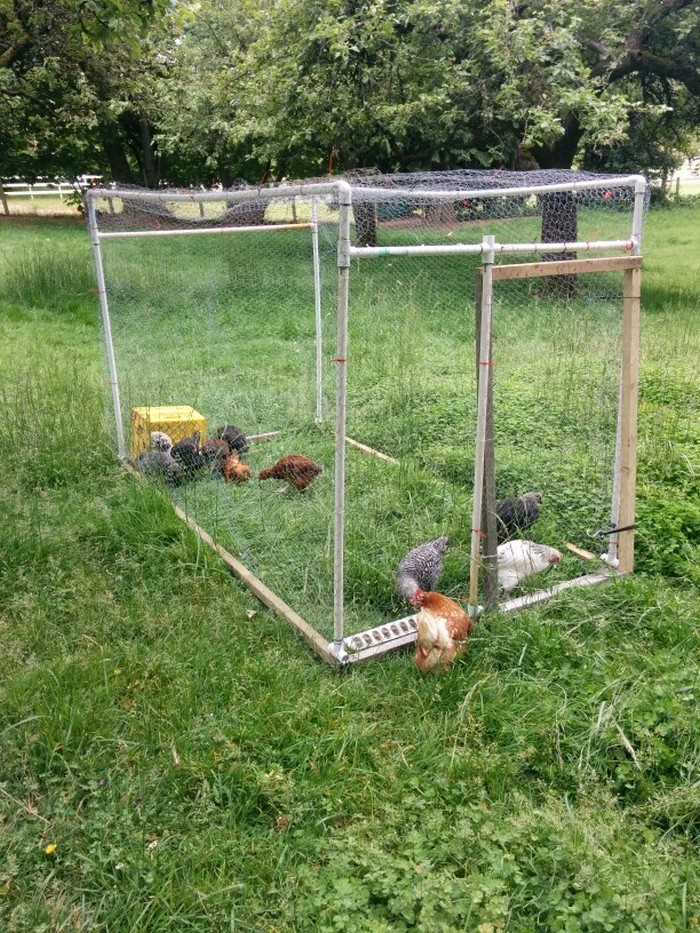


Steps
Step 1: Cut 3/4″ PVC Pieces
- Use the PVC cutter to cut the 3/4″ PVC pipes into the required lengths based on your design plan.
Step 2: Assemble the Base Frame
- Start by constructing the base frame of the chicken tractor using the 3/4″ PVC pipes, elbows, tees, and couplings. This forms the foundation of your structure.
Step 3: Add 1.25″ PVC Supports
- Integrate the 1.25″ PVC pipes and fittings to create the support arches for the chicken tractor. These will give your structure its shape and stability.
Step 4: Build the Roof Frame
- Use the 1.25″ PVC pipes and fittings to construct the roof frame, which will provide shelter for your chickens.
Step 5: Attach Chicken Wire
- Securely attach the chicken wire to the frame using cable ties, creating walls that protect your chickens while providing ventilation.
Step 6: Install the Roofing
- Cover the roof frame with the 3ft x 8ft metal roofing sheets. Secure them in place using self-threading sheet metal screws.
Step 7: Create Doors
- Construct doors for easy access using 1″ PVC pipes, elbows, and tees. Attach them to the frame and add hinges.
Step 8: Add Wheels
- Attach the 8″ utility wheels to the base for mobility, using 3/8″ carriage bolts and washers.
Step 9: Strengthen the Base
- Reinforce the base with 2×2 treated wood and the 2×4 wood piece. Use wood or drywall screws to secure them in place.
Step 10: Secure the Tarp and Bungee Cords
- Cover the chicken tractor with a tarp and secure it in place with bungee cords to provide additional weather protection.
Step 11 Finalize and Inspect
- Apply PVC cement where necessary to ensure the structure is sturdy and watertight. Double-check all connections and fastenings for security.
Your PVC chicken tractor plans are now ready to provide a safe and mobile home for your chickens!
Thanks to Raising Backyard Chickens 101 for sharing invaluable ideas on how to make a PVC Chicken Tractor.
Creative Ideas for Customizing Your PVC Chicken Tractor Plans
Exploring the world of PVC chicken tractor plans opens up numerous possibilities for customization. Whether you’re a seasoned farmer or a backyard chicken enthusiast, tailoring your PVC tractor can enhance both functionality and aesthetics. This section delves into various creative ideas to personalize your PVC tractor, making it not just a home for your chickens but a reflection of your unique approach to poultry care.
Colorful Designs
Customizing your PVC chicken tractor plans with color enhances its appearance and positively affects your chickens’ behavior. Bright colors can stimulate the chickens, making their environment more engaging.
On the other hand, softer tones can create a calming atmosphere. When choosing paints, consider UV-resistant options to prevent fading. You could add patterns or artistic designs for a more personalized touch. This could be a fun family project, engaging everyone in the care and aesthetic of your chicken’s home.
Modular Attachments
Modular attachments are more than just convenience; they create a dynamic environment for your chickens. Adding different nesting boxes can cater to the preferences of various chicken breeds.
Similarly, incorporating different chicken feeders and waterer styles can address the chickens’ varying needs at different life stages. For instance, a gravity-fed waterer might be more suitable for adult chickens, while a shallow water dish could be better for chicks.
The ability to attach and detach these elements facilitates cleaning and allows for seasonal adjustments. In colder months, you might add more insulation to the nesting boxes; in warmer months, additional ventilation or shading devices could be attached.

Roofing Variations
When it comes to the roof of your chicken tractor plans, the choices you make can significantly impact the internal environment. Transparent polycarbonate is an excellent choice for allowing natural light, which can boost the chickens’ vitamin D absorption and overall health.
However, it’s important to ensure adequate shading to prevent overheating in the summer. While less transparent, traditional metal roofing offers excellent durability and protection from the elements. It can also be painted to reflect sunlight, keeping the interior cooler. Another option could be a green roof, where you grow plants on the roof.
This adds beauty, integrates the tractor into your garden landscape, and provides additional insulation. Each roofing material has its pros and cons, and the choice should align with your climate, the needs of your chickens, and your personal aesthetic preferences.
Enhanced Mobility
Improving the mobility of your chicken tractor plans is essential, especially if you frequently move it to provide fresh grazing areas for your chickens. Larger, all-terrain wheels can handle various ground conditions, from soft soil to uneven grassland, ensuring smooth movement.
Adding a telescopic or foldable handlebar can also offer better control and ergonomic advantages, making it easier to maneuver the tractor, particularly for those with limited strength or mobility. For added convenience, consider installing a wheel locking mechanism.
This feature can provide stability when the tractor is in place, preventing unwanted movement. Additionally, integrating a lightweight but durable towing mechanism could allow for the tractor to be moved using a garden tractor or ATV, an invaluable feature for larger or heavier designs.
Interior Layouts
The interior design of your PVC chicken tractor plays a crucial role in the well-being of your chickens. Adding perches at varied heights not only caters to the natural roosting instincts of chickens but also helps establish social order within the flock. It’s important to use materials that are easy on their feet and provide sufficient grip.
Designing the space with partitioning can create separate areas for different activities, such as nesting, feeding, and roosting. This organization can reduce stress among the chickens and improve overall health. Additionally, a removable and easy-to-clean flooring system is vital for maintaining hygiene.
Materials like rubber mats or slatted wood can be easily cleaned and are gentle on the chickens’ feet. For a more advanced setup, consider a slanted floor design that allows eggs to gently roll toward a collection area, simplifying the egg-gathering process. Remember, the goal is to create a comfortable, safe, and clean environment that meets your chickens’ physical and psychological needs.
Seasonal Adaptations
Adapting your PVC chicken tractor for different seasons is crucial for the comfort and health of your chickens. For winter, consider adding insulated, removable covers to keep the cold out while allowing adequate ventilation.
These covers can be made from weather-resistant materials like heavy-duty tarp or even specialized insulating fabrics. In summer, good ventilation is key to prevent overheating. Adding adjustable vents or mesh panels can help maintain airflow. For hotter days, installing sun shades can provide necessary relief from direct sunlight, while removable rain covers can protect your chickens during sudden downpours.
Having a flexible interior layout is also beneficial, allowing you to easily adjust the space for changing weather conditions, such as adding or removing warming lamps or cooling fans as needed.
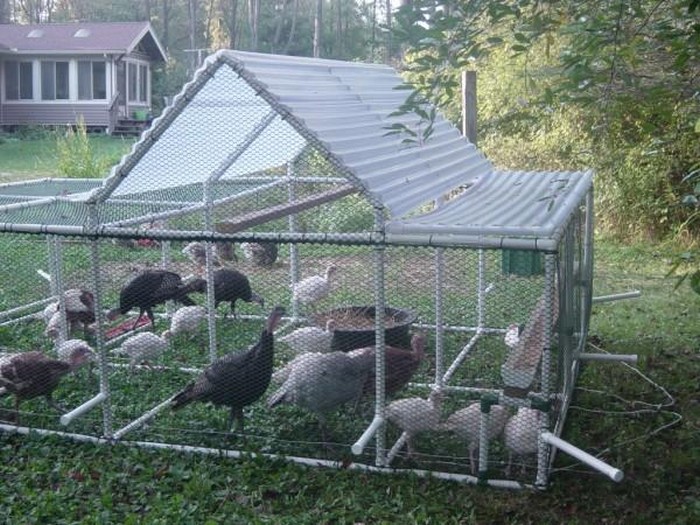
Security Enhancements
When protecting your chickens, enhancing the security of your chicken tractor plans is essential. Predator-proof locks are a must to prevent unwanted intruders. These locks should be robust and reliable, deterring clever predators like raccoons.
Reinforcing the structure with heavy-duty wire mesh instead of standard chicken wire can provide an added layer of security against larger predators. Motion-activated lights can significantly deter nocturnal predators and can be solar-powered for efficiency.
For added protection, consider installing an underground wire mesh skirt around the perimeter of the tractor to prevent digging predators. Regular inspections for any potential weak points or damages are also crucial in maintaining a secure environment for your chickens.
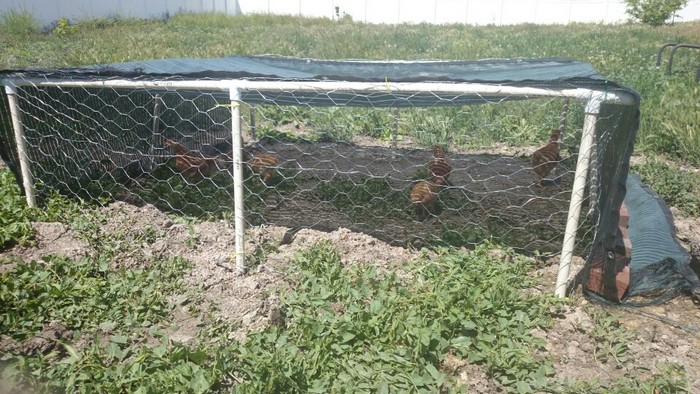
Eco-Friendly Additions
Integrating eco-friendly elements into your PVC chicken tractor benefits the environment and can enhance your setup’s functionality. Solar panels are a great addition for powering low-voltage lighting, which can extend the foraging time for your chickens during shorter winter days and provide the necessary warmth.
These panels can also power automatic feeders or waterers, reducing manual labor and ensuring consistent food and water supply. Collecting rainwater is another eco-friendly practice. Install a rainwater collection system with a gutter on the roof of the tractor, storing water in a barrel for use in chicken waterers. Using sustainable, recycled, or upcycled materials for parts of the tractor can further reduce the environmental impact. Each of these eco-friendly adaptations contributes to a sustainable, self-sufficient, and modern approach to poultry keeping.
By personalizing your PVC chicken tractor, you create a space that is both functional and a joy to look at. These customizations can enhance the chicken-keeping experience, ensuring your poultry has a comfortable, secure, and stimulating environment.
FAQs on PVC Chicken Tractor Guide
- What is a PVC Chicken Tractor?
- A PVC Chicken Tractor is a lightweight, mobile chicken coop made primarily from PVC pipes. It’s designed to be moved around your yard or farm to provide chickens with fresh grazing areas and natural foraging opportunities.
- Why use PVC for a Chicken Tractor?
- PVC is durable, lightweight, and resistant to rot, making it ideal for outdoor use. It’s also easy to work with and can be customized to suit different needs and designs.
- How often should I move my PVC Chicken Tractor?
- It’s recommended to move your tractor every few days to prevent overgrazing and to provide chickens with fresh grass and insects. The frequency may vary depending on the size of your tractor and the number of chickens.
- Can I build a PVC Chicken Tractor myself?
- Yes, it’s a feasible DIY project. With basic tools, materials like PVC pipes, and a clear guide, you can build your own chicken tractor tailored to your needs.
- Are PVC Chicken Tractors secure against predators?
- Yes, when built correctly with security enhancements like predator-proof locks and reinforced wire mesh. It’s important to inspect regularly for any potential vulnerabilities.
- How do I maintain a PVC Chicken Tractor?
- Regular cleaning, checking for any damages or loose fittings, and ensuring the structure remains sturdy are key maintenance practices. Seasonal adaptations can also be made for added comfort and durability.
- Is it possible to customize the size of my PVC Chicken Tractor?
- Absolutely. PVC Chicken Tractors can be designed in various sizes to accommodate different flock sizes and space availability.
- Can PVC Chicken Tractors withstand extreme weather?
- Yes, with appropriate modifications like weather-resistant covers for winter, ventilation for summer, and reinforcement against strong winds, they can be adapted for various weather conditions.
- Are there eco-friendly options for PVC Chicken Tractors?
- Yes, incorporating solar panels for lighting, using recycled materials, and installing rainwater collection systems are some of the ways to make your chicken tractor more eco-friendly.
- What should I consider when designing the interior of my PVC Chicken Tractor?
- Consider factors like the number of chickens, their behaviors, and needs. Include features like perches, nesting boxes, and an easy-to-clean flooring system for their comfort and safety.
- How can chicken owners balance free-ranging benefits with predator safety?
- The best compromise between predator safety and free-ranging is an A-frame chicken coop tractor. Its mobility lets hens feed on new grass daily, while its solid design and protective fence keep predators out. This design provides better nutrition, happier birds, and natural pest management while keeping your flock secure and comfortable.
- What challenges do backyard chicken owners face with predator attacks?
- Backyard chicken owners must balance predator protection with free-ranging rewards. Free-ranging hens enjoy natural behaviors and different meals, but predator attacks may be emotionally and practically disastrous. Movable chicken tractors, secure fencing, and predator deterrents balance freedom and security for a safe and happy flock.
- What are some challenges with automatic chicken coop door openers?
- Automatic chicken coop door openers present various issues that must be considered. Heavy doors may challenge lightweight designs, and unusual door orientations or longer travel durations may require unique solutions or retrofits. In inclement weather, the opener must be weatherproof, and battery-operated models need solar panels if energy is absent.
- What does the A-frame chicken tractor build plan include?
- The A-frame chicken tractor DIY plans include everything you need to build a mobile coop. A full materials list with sourcing links, step-by-step instructions with diagrams and images, and design optimization advice from experienced builders are included. Construction of the tractor takes 20-24 hours, and while it’s primarily a solitary effort, having aid makes some processes quicker and more fun. This complete tutorial assures a successful DIY project.
- How did the DIY A-frame chicken tractor design address mobility issues?
- A-frame chicken tractors were redesigned to be more mobile without losing durability. Design was sometimes excessively bulky and unwieldy for everyday shifting. My husband and I thought and drew a lightweight, strong construction, improving it using 3D CAD models. The final DIY tractor, made of lightweight materials, solves the problem by permitting solo handling while being useful and durable.
PVC Chicken Tractor Mastery
There you have it! You’ve learned the process of creating a versatile and mobile chicken coop using readily available PVC materials. With detailed instructions and a list of necessary materials and tools, now you can craft a practical and secure shelter for your feathered friends.
From constructing the frame and adding roofing to incorporating wheels for mobility and installing a tarp for extra comfort and protection, this step-by-step tutorial assures that you’ll have a functional and convenient chicken tractor to enrich your poultry-keeping experience.
Happy building!



